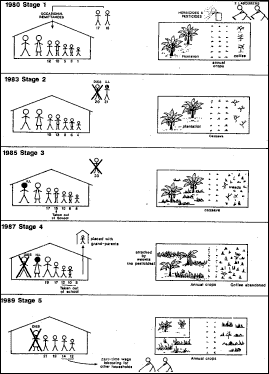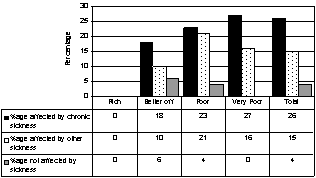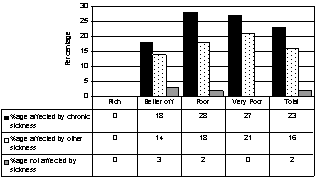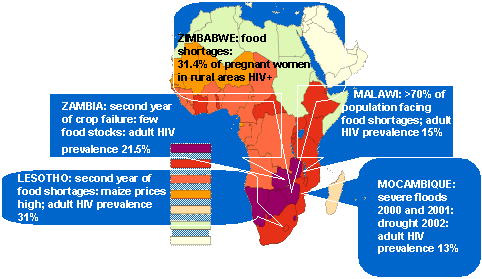


 |  |  | |
| Workshop tools | Programme | Participants | Case studies | Report | Papers | Resource documents | Links | |||
| Back to programme |
| Papers > Tony Barnett and Daphne Topouzis |
| Mitigation of HIV/AIDS Impacts through Agriculture and Rural Development |
|
Converted from MS PowerPoint presentation |
| Tony Barnett and Daphne Topouzis |
|
WHAT WE THINK WE KNOW
|
The impact of HIV/AIDS on a Ugandan rural household 1980-89

T. Barnett and P. Blaikie, AIDS in Africa: its present and future impact, Wiley, London and Guilford Press, NY, 1992. Reduction of output in a household with an AIDS death, Zimbabwe |
| Crops | Reduction in output |
| Maize |
61%
47% |
| Cotton | 49% |
| Vegetables | 37% |
| Cattle | 29% |
| Source: Kwaramba, P., “The Socio-Economic Impact of HIV/AIDS on Communal Agricultural Production Systems in Zimbabwe, Zimbabwe Farmers’ Union and Friederich Ebert Stiftung, Harare, December 1997. |
|
Malawi 2002. Percentage Of Households That Changed Their Crop Mix 
Source: Shah, M.K., Osborne, N., Mbilizi, T., Vilili, G., Impact of HIV/AIDS on Agricultural Productivity and rural Livelihoods in the Central Region of Malawi, CARE International in Malawi, January 2002. P. 46 Malawi 2002.Percentage Of Households That Left Land Fallow 
Source: Shah, M.K., Osborne, N., Mbilizi, T., Vilili, G., Impact of HIV/AIDS on Agricultural Productivity and rural Livelihoods in the Central Region of Malawi, CARE International in Malawi, January 2002. P. 47 |
Kenya: impact 2002
LIMITATIONS OF HOUSEHOLD STUDIES WHY THIS IS A NEW SITUATION IMPACT ON THE POLICY ENVIRONMENT A Long Wave Event
This has weakened the agricultural sector’s ability to respond to natural and environmental uncertainty |
CURRENT FOOD CRISES IN SOUTHERN AFRICA

|
SOUND IMPACT ASSESSMENTS ARE RARE
RESPONSES Recovery potential is diminished MOST PROPOSED RESPONSES
RESPONSES? WORDS: EMPOWERMENT, MAINSTREAMING, PARTICIPATION, LABOUR SAVING TECHNOLOGIES, STAKEHOLDER DEEDS??? INTIMATIONS OF THE WAY FORWARD?
|
| Main organisers: | ||||||||||
|
|
| |
|
| |
|
| |
|
| |
|
| |
|